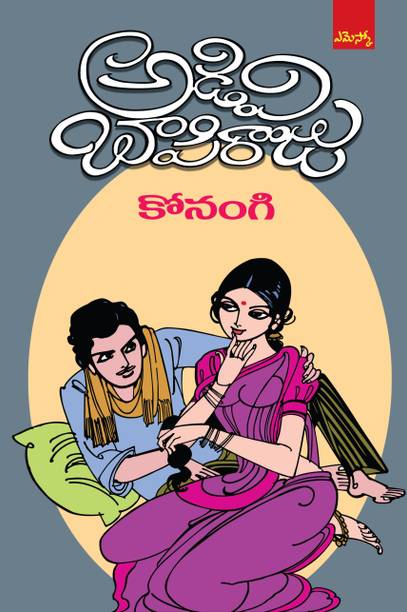Vashikaran Mantra Telugu Books Andhra

Jan 4, 2018 - తెలుగు పుస్తకాలు Telugu books Telugu Novels - Kinige. Online Vashikaran Books In Telugu, Vashikaran Mantra Books In Telugu.
One of the effective solution to get inner and outer beauty plus enhanced self-confidence. (Find Free Articles, Mantras & Stotras on ) Growing up in a spiritual environment, under the strict guidance of his Guru and surrounded by mahatmas and devotees, Guru Moti Lal ji has been instrumental in providing solutions to many devotees in the world. He is a spiritual scientist and an evolved spiritual guide rejuvenating the knowledge of mantras and stotras to help people live problem free life and getting abundance For general queries you can mail him to motilalhanda@gmail.com.
Gayatri mantra The Gāyatrī Mantra, also known as the Sāvitrī Mantra, is a highly revered from the (.62.10), dedicated to, the sun deity. Gāyatrī is the name of the in which the verse is composed. Its recitation is traditionally preceded by and the formula bhūr bhuvaḥ svaḥ, known as the mahāvyāhṛti, or 'great (mystical) utterance'. Is said to have created the Gayatri mantra. The Gayatri mantra is cited widely in Vedic and post-Vedic texts, such as the mantra listings of the liturgy, and classical Hindu texts such as the,,. It is also praised by the Buddha in the.
The mantra is an important part of the ceremony for young males in, and has long been recited by men as part of their daily rituals. Bandini serial last episode. Modern spread the practice of the mantra to include women and all castes and its use is now very widespread. Gayatri mantra personified as a goddess.
The main mantra appears in the hymn.62.10. During its recitation, the hymn is preceded by ( ॐ) and the formula bhūr bhuvaḥ svaḥ ( भूर् भुवः स्वः). This prefixing of the mantra proper is described in the (2.11.1-8), which states that it should be chanted with the syllable oṃ, followed by the three Vyahrtis and the Gayatri verse.
Whereas in principle the gāyatrī mantra specifies three of eight syllables each, the text of the verse as preserved in the Samhita is one short, seven instead of eight. Metrical restoration would emend the attested tri-syllabic vareṇyaṃ with a tetra-syllabic vareṇiyaṃ. The Gayatri mantra is, in: ॐ भूर् र्भुवः स्वः । तत्स॑वि॒तुर्वरेण्यं॒ भर्गो॑ दे॒वस्य॑धीमहि । धियो॒ यो नः॑ प्रचो॒दया॑त् ॥ In: bhūr bhuvaḥ svaḥ tatsaviturvareṇyaṃ bhargo devasyadhīmahi dhiyo yo naḥ prachodayāt – Rigveda 3.62.10 Dedication [ ]. • Staal, Frits (June 1986).
'The sound of religion'. • ^, p. 15–16.
• ^ Shults, Brett (May 2014). Journal of the Oxford Centre for Buddhist Studies. • ^ Carpenter, David Bailey; Whicher, Ian (2003). London: Routledge. Van Nooten and G. Holland, Rig Veda. A metrically restored text.
Cambridge: Harvard Oriental Series (1994). Beck (2006).
Wilfrid Laurier University Press. • Constance Jones,James D. Ryan (2005), Encyclopedia of Hinduism, Infobase Publishing, p.167, entry 'Gayatri Mantra' • Roshen Dalal (2010), The Religions of India: A Concise Guide to Nine Major Faiths, Penguin Books India, p.328, entry 'Savitr, god' • Monier Monier-Williams (1882). Asher & Company. • Forrest Morgan, ed.

New York: The International Bibliophile Society. • Giffith, Ralph T. • Sharma, Shriram. AWGP Organization. • Jones, William (1807).
Stockdale and J. • (January 1893). Archived from on 14 June 2010. • Appendix 'C', Sivanath Sastri 'History of the Brahmo Samaj' 1911/1912 1st edn.
Page XVI, publ. Sadharan Brahmo Samaj, 211 Cornwallis St. Calcutta • Vivekananda, Swami (1915). Advaita Ashram.
• ^ Radhakrishnan, Sarvepalli (1947). Radhakrishnan,, (1953), p. • Singh, Kirpal (1961). • VSM.36.3 • Dravida recension: 27.1; Andhra recension: 35.1; Atharva recension: 15.2 • Shankhayana grhyasutra: 2.5.12, 2.7.19; Khadira grhyasutra: 2.4.21; Apastambha grhyasutra: 4.10.9-12; Varaha grhyasutra: 5.26 • Ravi Varma(1956), p.460f, Gonda(1963) p.292 • Keith, Vol I. P.lxxxi • Wayman, Alex (1965).
'Climactic Times in Indian Mythology and Religion'. History of Religions. The University of Chicago Press. 4 (2): 295–318.. • This is on the authority of the Shankhayana Grhyasutra, and 2.7.10. Gonda,, Oriens, Vol. 16, (31 December 1963), p.